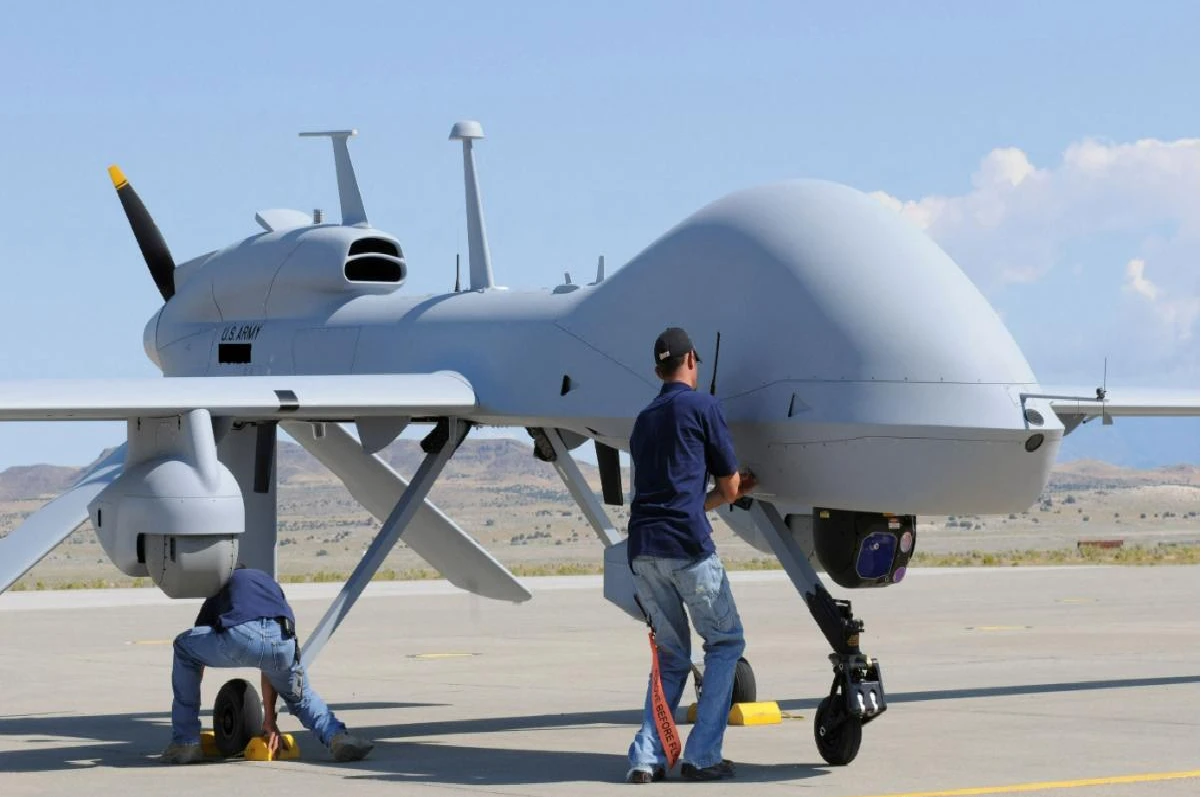
Predator
The formal acquisition process for India’s 31 top-notch weaponized MQ-9B drones from the US will begin early the following month. The goal is to sign the actual contract within this fiscal year and implement all remotely piloted aircraft systems gradually over the following six to seven years.
The “hunter-killer” MQ-9B Reaper or Predator-B drones are significantly more advanced than China’s current armed drones. They are built to fly for about 40 hours at heights over 40,000 feet for observation missions and are equipped with Hellfire air-to-ground missiles and smart bombs for pinpoint strikes.
In addition, China has been giving Pakistan access to its armed Cai Hong-4 and Wing Loong-II drones. “The US government will receive the actionable LoR (letter of request) for the 31 MQ-9B drones in the first week of July. This comes after the defence acquisitions council, which Rajnath Singh leads, gave the transaction the AoN (acceptance of need) on June 15,” a top defence ministry officer said on Saturday.
The intergovernmental agreement for the 31 drones, which include related mobile ground control systems, weaponry, and other equipment, is expected to be worth approximately $3.5 billion (almost Rs 29,000 crore). The Navy will receive 15 Sea Guardians and the Army and IAF will each receive eight Sky Guardians.
The high-altitude, long-endurance (HALE) drones would be put together in India as per the agreement. “Drone producer General Atomics will collaborate with Indian businesses to produce some components here. The officer stated that while the current figure for this is 8–9%, there is room to raise it to 15-20%.
A “cost-effective and comprehensive global MRO (maintenance, repair, overhaul) facility” that can serve nations like Australia and Japan would also be established by General Atomics in India.
As part of its foreign military sales (FMS) programme, the US government will respond to India’s LoR with a LoA (letter of acceptance) that includes the final costing and the necessary notification to the US Congress.
The technical-commercial negotiations have already covered a lot of ground. After receiving final approval from our CCS (cabinet committee on security), the deal will be signed, the official stated.
Within one to two years after the contract’s signing, India intends to introduce the first 10 MQ-9B drones, albeit this would rely on General Atomics’ production capabilities. Every six months, batches of the remainder will arrive.
With nine `hard points’ to carry missiles and smart bombs, the drones will bolster India’s long-range over-the-horizon ISR (intelligence, surveillance and reconnaissance) and strike capabilities both in the Indian Ocean Region (IOR) as well as the land frontiers with China and Pakistan.
The plan is to deploy the drones at three tri-Service ISR command and control centres in the northwest, northeast and south India. The two unarmed Sea Guardians, acquired by the Navy on lease from General Atomics in September 2020, are based at naval air station INS Rajali at Arakkonam in Tamil Nadu. They have been effectively used for high-end ISR missions both in the IOR as well as the 3,488-km Line of Actual Control with China.
The MQ-9B deal is also expected to help DRDO eventually develop indigenous armed HALE drones capable of firing missiles and precision-guided munitions on enemy targets before returning to their home bases to re-arm for their next mission like manned fighter jets.
The Indian armed forces do possess a sizable number of UAVs (unmanned aerial vehicles), primarily of Israeli origin, for real-time reconnaissance and precision targeting, while far trailing China in this important military domain. Israeli Harop “killer” or Kamikaze drones are another weapon used by the IAF; they function as cruise missiles by detonating when they hit enemy targets and radars.
The remotely piloted strike aircraft (RPSA), a scaled-down version of which the DRDO tested in July of last year, was called the stealth wing flying testbed (SWiFT). But before it can start operating, several years will pass.

















